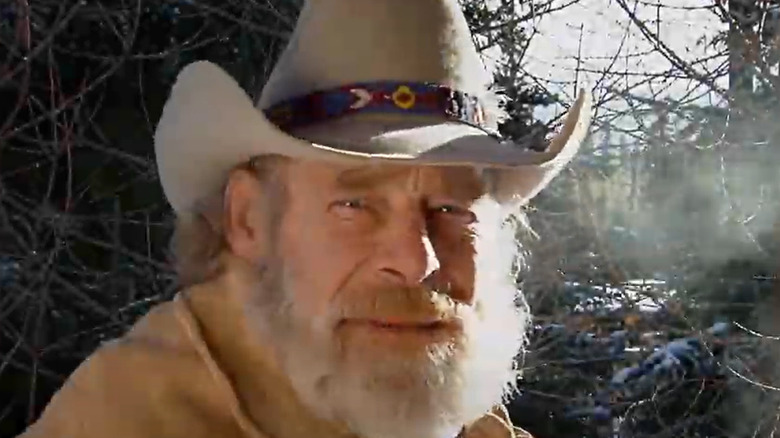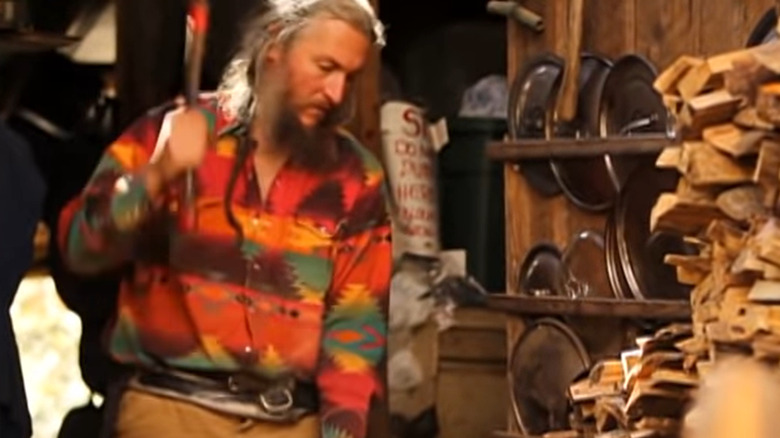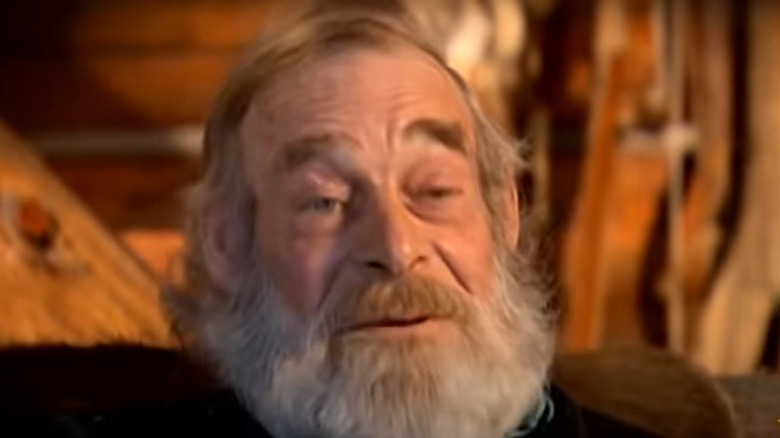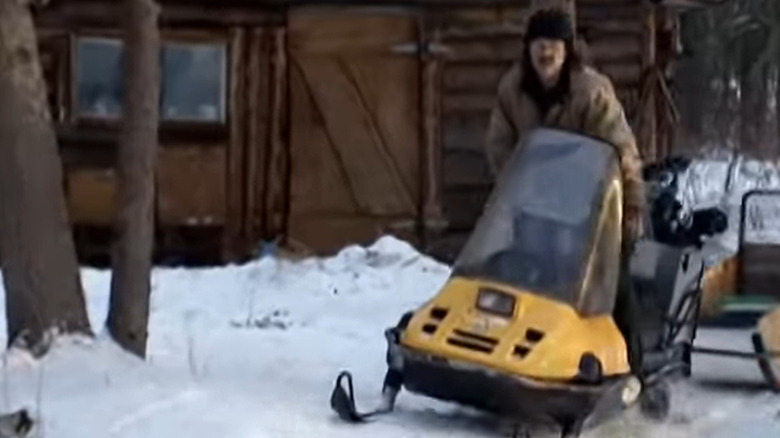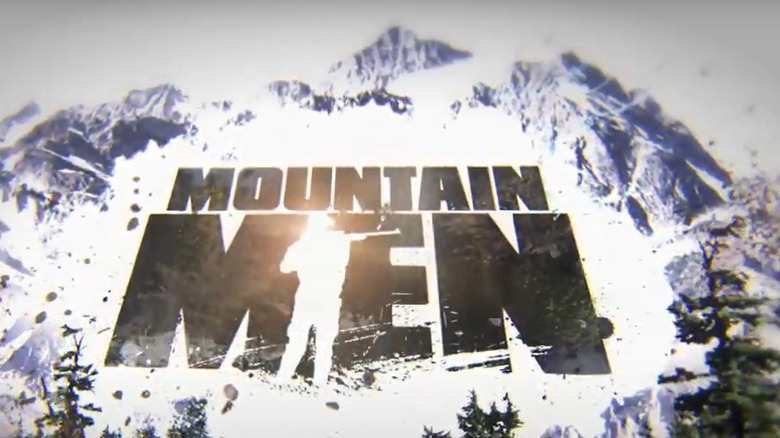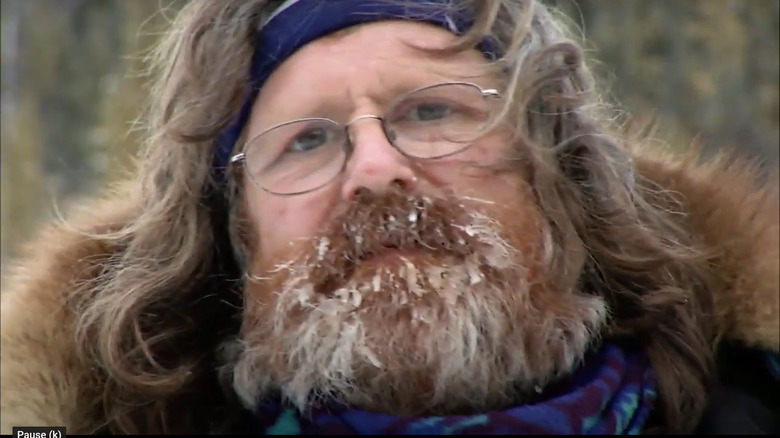What Nobody Told You About History Channel's Mountain Men
If you're looking to get lost in the untamed, frozen wilderness of North America without ever leaving the warmth of your living room, you're probably tuned into History Channel's "Mountain Men." This 10-season hit reality show traces (and sometimes even traps) the lives of unlikely superstars who aren't just offline. They're completely off the grid. These are the homesteaders, wildlife hunters, and stockpilers, who are carving out lives in some of the most uninhabitable places around.
Harkening a Wild West spirit and placing it against the backdrop of a sub-zero mountain setting is no easy task. As the world watches with bated breath, larger-than-life personalities take center stage and off-grid gets even wilder on camera. Who are these modern-day survivalists, and how accurate is their portrayal of this fringe lifestyle we'd all love to explore? Here's a look at some fascinating facts about "Mountain Men" that you might not already know.
Education is a cornerstone of mountain life
At first glance, "Mountain Men" may come across as a depiction of brawn over brains. However, once the reality of the harsh wilderness sets in, it's clear that these rugged outdoorsmen could teach most modern tech enthusiasts a thing or two about nature, survival, and even philosophy.
A few decades ago, American naturalist and "Mountain Men" cast member Eustace Conway set out to do just that. He set aside a large mass of land and established a school that serves the purpose of teaching humans how to thrive in natural environments, essentially passing down vital knowledge of a fading way of life (via Turtle Island Preserve).
Unfortunately, the local government didn't understand his message, and Fox News reported that in 2012, officials threatened to shut down Conway's unique educational institution, citing code violations. Not a man to back down from his stance, Conway fought the system and a new law was established making certain building rules inapplicable to farm buildings, greenhouses, and primitive camps (via NCLEG). Contrary to popular opinion, Conway is quite an educated man. In addition to owning and operating this off-grid school, he also holds a Bachelor's in English and anthropology from Appalachian State University, where he was dubbed "Most Outstanding Anthropology Senior" (via The Famous People).
Tom Oar nearly died as a 35-year-old rodeo star
Fans of the show may know Tom Oar as a master trapper roughing the wilderness at 70-plus years of age (via Distractify). What many do not know is that he nearly died at the age of 35 in a rodeo show that would forever alter his perspective (via City Lifestyle).
Tom spent the first half of his life trick riding horses and bulls. By his mid-30s, he had garnered quite the reputation as a champion rider with the International Rodeo Association. But on one I'll-fated winter day in 1970, Tom nearly died catching a ride on a bull by the name of Woolly Bugger. He had to be carried out of the arena via stretcher. It was an experience he didn't soon forget.
Shortly after the narrow brush with death, Tom Oar dropped the reins and the rodeo and answered the call of the mountains.
Exaggerated scenes plague the plot
A mountain man's life can certainly be grizzly, but some cast members and fans point out that plot lines are exaggerated intentionally to keep the viewers enthralled. As cast member Tom Oar explained in an interview with the Billings Gazette. "They always have to make it seem more dangerous," he said, referring to survival tactics he uses throughout his daily routine.
Of course, these supposed exaggerations are still taking place in a real-life setting where frostbite meets mountain lion and unsuspecting people can easily become prey. Distractify reports that there have been instances where menacing animals posed real-time threats, but the camera crew was forced to reshoot the footage. Hence, the situation was real, but the photography was dramatized for viewing entertainment. Yet, it isn't just the situations that are over-emphasized for the screen. Some of the show's stars are also making mountains out of mole hills, so to speak.
According to Screen Rant, notorious wild card Eustace Conway told author Elizabeth Gilbert that he really plays up his rugged, eccentric persona for the cameras. Apparently, he's well aware of the stereotypes associated with people who choose the off-grid lifestyle. Rather than attempt to prove people wrong, he uses those stereotypes to his advantage, a tried-and-true entertainment strategy that never gets old.
The camera crew has to be pretty tough, too
From the wide, frozen mountainside, nobody is safe. While some aspects of the show are a bit exaggerated, the threats of the elements are quite real. Behind the scenes, members of the crew might not be projected as the quintessential faces of ruggedness, but they have to be pretty tough, too.
Take, for example, camera operator Mason Gertz, who, while filming the acclaimed reality show, fell through the cracks of an icy lake (via Screen Rant). The freezing conditions of the arctic water seeping up around him could have been enough to cause drowning, hypothermia, or even gangrene. Fortunately, a rescue crew prevented such ailments from occurring, but it illustrates the foreboding atmosphere quite well.
"I also nearly lost part of my hand to frostbite while trying to film a lynx," Gertz proclaimed to Men's Journal, referencing a separate incident. His experience is far from abnormal. Other crew members describe three-day treks over slippery terrain in minus 30-degree temperatures, mountain lion charges, and lugging cumbersome equipment throughout the journey. The irony lies in the fact that all of this happens so viewers can watch this reality series from the comfort of their heated, cable-equipped houses.
The show saved lives and revived communities
One of the biggest takeaways of this History Channel show is in the compassion of these rugged outdoorsmen. It shows in their lifestyle and dedication to the preservation of both nature and community. Many of the cast members are heralded as real-life heroes, like Rich Lewis who, in his early career, killed a mountain lion that had already killed two dogs and attacked another (via the Missoulian). The fear resonated through town that other pets, livestock, and even small children could have become victims were it not for Lewis' swift defensive actions.
In a separate but equally noteworthy incident, mountain man Marty Meierotto saved reporter Bill Heavey's life when the journalist became lost in the sub-zero temperatures of an unforgiving Alaskan landscape (via Field and Stream). And on a broader scale, "Mountain Men" has had a tremendous impact on the local economy, drawing attention and pushing local production talent to the forefront of America (via the Missoulian).
